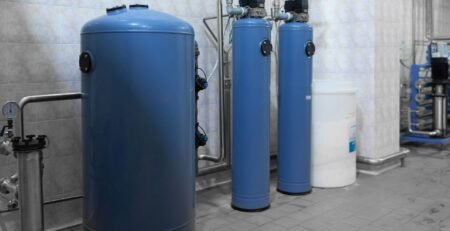8
Sep
Choosing the Right Centrifuge Rotor: A Comprehensive Comparison for Australian Laboratories
Choosing the correct rotor is critical for centrifuge efficiency, safety, and the quality of sample separation. With various rotor types available, understanding their advantages and applications helps Australian laboratories optimize workflows and equipment performance.
At LabChoice Australia, we guide laboratories nationwide through selecting the ideal rotor to match their centrifugation needs.
Common Centrifuge Rotor Types
| Rotor Type | Description | Advantages | Ideal Applications |
|---|---|---|---|
| Fixed-Angle Rotor | Holds tubes at a fixed angle (usually 25°-40°) | Faster sedimentation; compact design; lower risk of sample disturbance | Blood separation, cell pelleting |
| Swing-Bucket Rotor | Buckets swing out horizontally during spin | More gentle separations; improved layer formation; best for gradient centrifugation | Density gradient separation, cell fractionation |
| Vertical Rotor | Tubes remain vertical during spin | High-speed pelleting; quick sedimentation | Analytical ultracentrifugation |
| Microplate Rotor | Designed for centrifuging plates and large tubes | Facilitates high-throughput processing | PCR prep, sample harvesting |
| Specialty Rotors | Custom designs for unique tube formats and volumes | Tailored solutions for specific protocols | Specialized applications like blood bag processing |
Comparison Table: Rotor Types for Australian Labs
| Feature | Fixed-Angle Rotor | Swing-Bucket Rotor | Vertical Rotor | Microplate Rotor | Specialty Rotor |
|---|---|---|---|---|---|
| Sedimentation Speed | Fast | Moderate | Very fast | Moderate | Variable |
| Sample Disturbance | Low | Very low | Moderate | Low | Depends on design |
| Ease of Loading | Moderate | Easy | Moderate | High | Varies |
| Versatility | High | High | Low | Moderate | Purpose-built |
| Typical Applications | Cell pelleting, blood separation | Gradient separations, cell fractionation | Analytical research | Molecular biology | Specialized workflows |
| Maintenance | Standard rotor care | Slightly higher maintenance (buckets) | Specialized maintenance | Routine cleaning | Manufacturer guidelines |
Choosing the Right Rotor for Your Lab
- Use fixed-angle rotors for fast pelleting where sample disturbance must be minimized.
- Choose swing-bucket rotors for sensitive separations requiring clear layer formation and gradients.
- Vertical rotors suit high-speed analytical centrifugations with complex protocols.
- Microplate rotors enable efficient handling of multiple samples in genetic or pathology labs.
- Specialty rotors should be considered for bespoke applications as needed.
FAQs: Centrifuge Rotors
Q1: Can different rotors be used on one centrifuge?
A: Many centrifuges support multiple rotor types; verify compatibility before purchase.
Q2: How should rotors be maintained?
A: Regular cleaning, inspection for cracks, and adherence to manufacturer guidelines ensure safety and longevity.
Q3: Are specialty rotors expensive?
A: They tend to be pricier due to customization but offer critical functionality for specific tasks.
Q4: How do rotor types affect speed and force?
A: Rotor geometry impacts achievable RPM and RCF, influencing separation quality.
Author
Dr. Emily Harper, Ph.D., Biomedical Sciences — Laboratory equipment specialist focusing on centrifuge optimization for Australian laboratories.
References
- Eppendorf. Centrifuge Rotor Selection Guide. 2024.
- Sigma-Aldrich. Types of Centrifuge Rotors and Uses.
- University of Melbourne. Laboratory Equipment Maintenance Manual. 2024.
- ASTM International. Standards for Rotor Safety and Performance.
Useful Links and Resources
- Understanding Centrifuge Rotors
- Maintenance Tips for Centrifuge Rotors
- Selecting the Right Rotor for Your Application



